01.
Introduction
CRO hypothesis building is the step in conversion rate optimisation where data and insights are transformed into clear, testable ideas. Instead of jumping straight into design changes, this process ensures every experiment has a purpose. It starts with CRO Analysis which reviews data that is currently available, from analytics, user feedback or heatmaps.
Uncovering where users are struggling or disengaging is the next step, creating a hypothesis that links the problem with a potential solution. For example, if analysis shows a high drop-off on a checkout page, the hypothesis might be: “If we simplify the form by reducing the number of required fields, then more users will complete their purchase.”
An essential part of this is building strong hypotheses helps prioritise testing. Grounding tests in data, you’re looking conversion paths or engagement drops. Following this approach, every hypothesis is measurable, you can validate what works and quickly discard what doesn’t.
In summary, CRO hypothesis building connects data analysis with practical action. It turns insights into strategic recommendations for CRO testing, aligning outcomes with improving both conversions and user experience.
Creating hypotheses based on data will give you the best opportunity to improve conversion rates. Aiming to remove as much friction as possible will drive more users to convert.
02.
CRO Hypothesis Building Deliverables
CRO Hypothesis Building
CRO Hypothesis building helps your business move beyond guesswork by developing structured, evidence based testing plans. Each hypothesis is designed to address a specific barrier or opportunity in your user journey, ensuring that every test has a clear purpose and measurable outcome.
All hypothesis that are created, are delivered in a one-page summary format. These summaries outline the test concept, expected results, testing parameters and timeframe. This format makes it easy for stakeholders to quickly review, prioritise and approve tests. By having everything documented in a clear and consistent way, your team can stay aligned and confident about the value each test brings.
Having a series of hypotheses that are created on data increases the likelihood of meaningful results and build a repeatable process for optimisation. Instead of running random experiments, your CRO program becomes a strategic engine for growth. With a library of hypotheses, you’ll have a clear roadmap for testing that drives incremental improvements and long-term impact.

03.
Common CRO Hypotheses Building Questions
After the first run of hypothesis building, there should generally be enough for at least 10 different CRO tests to be created, this is dependent on the data that is available at the time. Over time, behaviour changes from users or the business focus may change so it is important to keep up with those requirements and update to ensure that the tests are still in alignment with business goals.
The recommendation is to try and limit the amount of cross over in the tests that are being completed. This is mainly down to the variables that you can control. When doing an A/B test for example, we would know that there are specific market trends that could be playing a factor in the data that is being collected. For example, if there is any seasonality within the data or if there are specific weeks of the month that have a bigger level of engagement.
If tests are wholly different or looking at either a behaviour change versus a conversion funnel or journey then we can proceed with running these concurrently.
Ideally, we would make sure that we have enough data to ensure that we are seeing statistical significance against a significant proportion of the traffic. If we can see that the variation has been successful then we can look to work with the development team to make the changes so that they are there for all users.
This does means that any tests on the same journey will use the new variation as the ‘control’ this will make sure that we are always improving and building off a new base.
05.
Let’s talk about your business
Ready to find your One Percents and start making a change to your business? Whether you’re looking for expert advice, a custom strategy, or just want to explore how we can help, we’d love to hear from you.
06.
Recent Articles and Guides
[blocksy_posts limit=”3″ has_pagination=”no”]








